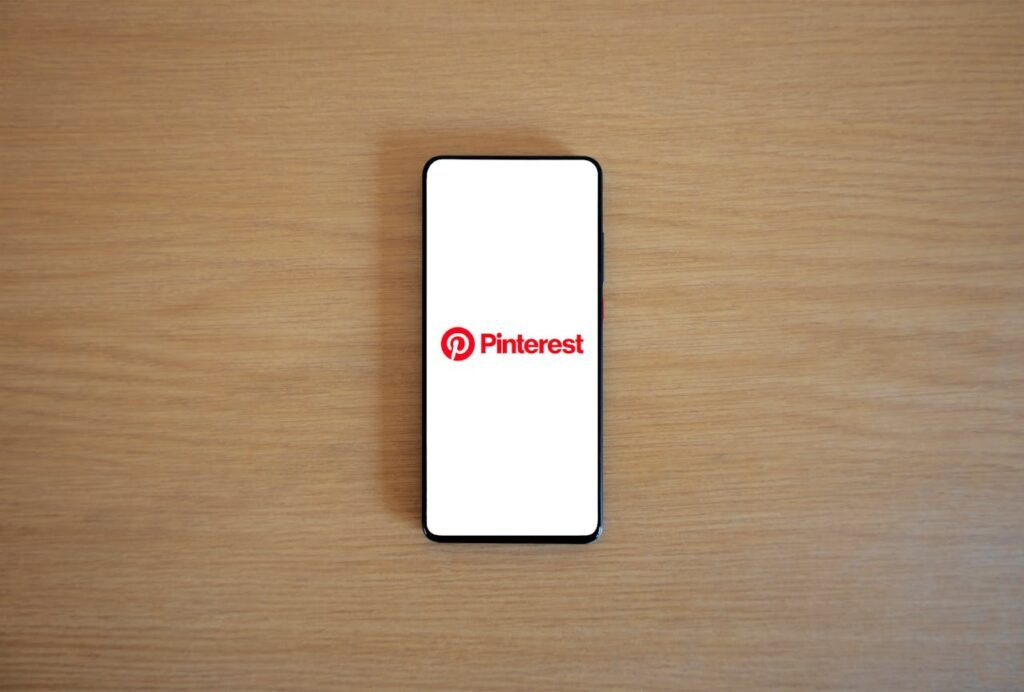In today’s digital age, generating earned media through social media is a powerful way to build your brand, increase visibility, and gain credibility. Earned media refers to the organic publicity you receive through word-of-mouth, shares, mentions, and reviews, as opposed to paid media like advertisements. It’s a testament to the value and trust you’ve built with your audience. This article will explore detailed, actionable strategies to help you leverage social media to generate earned media effectively. Let’s dive in!
Understanding Earned Media

What is Earned Media?
Earned media is the exposure your brand gets through organic means. This includes mentions in articles, reviews, social media shares, and user-generated content. It’s called “earned” because it’s a result of the positive reputation and value you’ve created, rather than something you’ve paid for.
Earned media is incredibly valuable because it comes from trusted sources—your customers, influencers, and industry experts. It’s more credible than paid advertisements because it’s seen as genuine endorsements from real people.
Why is Earned Media Important?
Earned media builds trust and authenticity. When people see your brand being mentioned positively by others, they are more likely to trust and engage with you. It can significantly enhance your brand’s reputation and lead to higher conversion rates.
It also has a broader reach. Since earned media is shared by various people across different platforms, it helps you reach audiences you might not have targeted directly. This organic spread can lead to increased brand awareness and new customer acquisition.
Types of Earned Media
Understanding the different types of earned media can help you strategically plan your social media efforts to generate more organic exposure. Mentions are references to your brand, products, or services on social media, blogs, news articles, and other platforms. Mentions can be direct or indirect and are a key indicator of your brand’s visibility. Shares occur when users share your content, helping to amplify your message to their own followers. This can exponentially increase your content’s reach and visibility.
Customer reviews and testimonials on platforms like Yelp, Google, and social media are powerful forms of earned media. They provide social proof and can influence potential customers’ purchasing decisions. User-generated content (UGC) includes photos, videos, and blog posts created by your customers.
UGC showcases real-life usage of your products and adds authenticity to your brand. Media coverage involves press mentions and news articles about your brand, which can significantly boost your visibility and credibility. Media coverage often stems from press releases, events, or noteworthy achievements.
The Value of Earned Media for Startups
For startup founders, generating earned media is particularly important. With limited budgets for paid advertising, earned media provides a cost-effective way to build brand awareness and credibility. Earned media is cost-effective marketing because, unlike paid media, it doesn’t require a financial investment. By focusing on creating valuable content and building strong relationships, startups can achieve significant exposure without spending a lot of money.
It also increases credibility as earned media is seen as more trustworthy because it comes from real users and respected voices in the industry. When potential customers see positive mentions and reviews from others, they are more likely to trust your brand. This credibility is crucial for startups trying to establish themselves in competitive markets.
Strategic Benefits of Earned Media
Earned media offers several strategic benefits for startups. It helps build a loyal customer base by fostering genuine connections with your audience. Customers who share and talk about your brand voluntarily are more likely to become loyal advocates. This advocacy can lead to more word-of-mouth referrals, further enhancing your reach. Earned media also supports content marketing efforts.
High-quality content that resonates with your audience is more likely to be shared, increasing its reach and impact. By integrating earned media into your content strategy, you can amplify your message and attract more engagement. Additionally, earned media provides valuable feedback. Mentions, reviews, and user-generated content offer insights into what your customers like and where you can improve. This feedback can inform product development, customer service improvements, and overall business strategy.
Creating a Foundation for Earned Media
To generate earned media, you need to create a strong foundation. Start by building a robust social media presence. Engage with your audience regularly, share valuable content, and encourage interaction. Authenticity and consistency are key to building trust and encouraging organic mentions. Leverage storytelling to create emotional connections with your audience.
Share stories about your brand’s journey, your team, and your customers. These narratives make your brand relatable and memorable, increasing the likelihood of organic shares. Develop partnerships with influencers and industry experts who can amplify your message. Build genuine relationships with these partners, focusing on mutual benefits and shared values. Their endorsements can significantly enhance your credibility and reach.
Measuring and Analyzing Earned Media
Measuring the impact of earned media is crucial to understanding its effectiveness and refining your strategies. Track key metrics such as engagement rates, share counts, and reach. Use social media analytics tools to gather data and gain insights into your earned media performance.
Analyze the sentiment of mentions and reviews to understand the overall perception of your brand. Positive sentiment indicates strong brand reputation, while negative sentiment highlights areas for improvement. Use this analysis to make data-driven decisions and continuously improve your earned media efforts.
Creating Shareable Content
Understand Your Audience
To generate earned media, you need to create content that resonates with your audience. Start by understanding who your audience is, what they care about, and how they interact with content.
Use social media analytics tools to gather insights into your audience’s demographics, interests, and behaviors. Identify the types of content that get the most engagement—whether it’s videos, infographics, blog posts, or memes.
Create audience personas to guide your content creation. These personas should represent your ideal customers and include details about their goals, challenges, and preferences. Tailor your content to address their needs and interests.
Create High-Quality Content
High-quality content is the cornerstone of generating earned media. Your content should be valuable, engaging, and shareable. Focus on creating content that educates, entertains, or inspires your audience.
Invest in visually appealing graphics and professional videos. High-quality visuals are more likely to be shared and remembered. Use tools like Canva or Adobe Spark to create eye-catching graphics, and consider hiring a professional videographer for important projects.
Tell stories that resonate with your audience. Storytelling is a powerful way to connect emotionally with your audience. Share stories about your brand’s journey, customer success stories, or behind-the-scenes looks at your business.
Utilize User-Generated Content
User-generated content (UGC) is a goldmine for earned media. Encourage your customers to create and share content related to your brand. This could be reviews, testimonials, photos, videos, or social media posts.
Create campaigns that encourage UGC. For example, you could run a photo contest where customers share their best photos using your product, with a unique hashtag. Feature the best entries on your social media channels to show appreciation and inspire others to participate.
Engage with the content your customers create. Like, comment on, and share their posts. This not only shows that you value their contributions but also increases the visibility of their content and, by extension, your brand.
Engaging with Influencers
Identify the Right Influencers
Influencers can significantly amplify your efforts to generate earned media. They have established credibility and a loyal following that trusts their recommendations. However, it’s crucial to identify the right influencers for your brand.
Look for influencers who align with your brand values and whose audience matches your target demographic. Use tools like BuzzSumo, Traackr, or Influencer.co to find influencers in your industry.
Evaluate their engagement rates, the quality of their content, and their follower demographics. An influencer with a smaller but highly engaged audience can be more valuable than one with a large but disengaged following.
Build Authentic Relationships
Building authentic relationships with influencers is key to successful collaborations. Instead of approaching influencers with a transactional mindset, focus on building long-term partnerships based on mutual respect and shared values.
Engage with their content by liking, commenting, and sharing their posts. Show genuine interest in their work and provide value before asking for anything in return. This could be through sharing their content, giving them a shoutout, or offering them exclusive access to your products or services.
When you’re ready to collaborate, approach them with personalized messages that highlight why you think they’re a great fit for your brand and what you hope to achieve together. Be clear about the value you can offer them and their audience.
Create Engaging Campaigns
Collaborate with influencers to create engaging campaigns that encourage their followers to engage with and share your content. This could be through product reviews, unboxings, giveaways, or takeovers.
Ensure that the campaigns are authentic and align with the influencer’s style and audience preferences. Authenticity is crucial for earned media, as audiences can easily spot insincere endorsements.
Track the performance of these campaigns through metrics such as engagement rates, reach, and conversions. Use these insights to refine your strategies and build more effective campaigns in the future.
Leveraging Social Media Platforms
Facebook Strategies
Facebook is a powerful platform for generating earned media due to its vast user base and various engagement features. Here’s how to leverage it effectively:
Create and share engaging content regularly. This includes articles, videos, live streams, and infographics that resonate with your audience. Use Facebook Insights to understand what types of content perform best and when your audience is most active.
Engage with your community by responding to comments, participating in discussions, and acknowledging shares and mentions. Building a strong community on Facebook increases the likelihood of your content being shared organically.
Utilize Facebook Groups to foster a sense of community around your brand. Create a group for your customers and fans where they can discuss your products, share experiences, and provide feedback. Active participation in these groups can lead to more organic mentions and shares.
Instagram Strategies
Instagram is ideal for visually-driven content and can be a goldmine for user-generated content and influencer collaborations.
Share high-quality, visually appealing content that tells a story. Use a mix of posts, Stories, and Reels to keep your content diverse and engaging. Highlight user-generated content by sharing customer photos and testimonials on your profile.
Use Instagram Stories to engage with your audience in real-time. Polls, Q&A sessions, and countdowns are great for increasing interaction and keeping your audience engaged.
Collaborate with influencers to reach a wider audience. Ensure that your partnerships are authentic and that the influencer’s audience aligns with your target demographic. Influencer takeovers, where influencers post on your account for a day, can provide fresh content and attract new followers.
Twitter Strategies
Twitter’s real-time nature makes it perfect for engaging with your audience and generating conversations around your brand.
Participate in trending conversations by using relevant hashtags. Share your expertise and join discussions related to your industry. This increases your visibility and positions you as a thought leader.
Create and share content that sparks conversation. Ask questions, share polls, and encourage your followers to share their opinions and experiences. Retweet and respond to mentions and tweets that involve your brand.
Host Twitter chats or take part in industry-related Twitter chats. This involves a scheduled time where you and your followers discuss a specific topic using a designated hashtag. It’s a great way to engage your audience and attract new followers interested in the discussion.
LinkedIn Strategies
LinkedIn is an excellent platform for B2B brands and professionals looking to build thought leadership and generate earned media through professional networks.
Share valuable content that showcases your expertise. This could be articles, whitepapers, case studies, and industry insights. Use LinkedIn’s publishing platform to share long-form content and increase your reach.
Engage with your network by commenting on posts, sharing industry news, and participating in LinkedIn groups. Provide thoughtful insights and add value to conversations to build your reputation as an industry expert.
Encourage your employees to share content about your company. Employee advocacy can significantly extend your reach and credibility. Share their achievements, insights, and experiences on your company page and encourage them to do the same on their profiles.

Engaging Your Audience
Create Interactive Content
Interactive content is highly engaging and encourages your audience to share and participate. This can significantly increase your chances of generating earned media.
Use polls, quizzes, and surveys to engage your audience. These can be fun and informative, and they encourage participation. Share the results and insights you gather, giving your audience a reason to stay engaged.
Host live sessions, such as Q&A sessions, webinars, or live product demos. This real-time interaction can build stronger connections with your audience and encourage them to share their experiences.
Encourage User-Generated Content
User-generated content (UGC) is one of the most effective ways to generate earned media. It involves your audience creating and sharing content related to your brand.
Run contests and challenges that encourage your followers to create content. For example, a photo contest where customers share their best photos using your product, with a chance to win a prize.
Feature the best UGC on your social media channels. This not only provides you with fresh content but also shows appreciation for your customers and encourages others to participate.
Respond to and Amplify Mentions
Monitoring and responding to mentions is crucial for building relationships and generating more earned media. Use social listening tools to keep track of what people are saying about your brand.
Respond to mentions promptly and thoughtfully. Thank your customers for positive mentions and address any concerns or questions they might have. Engaging with your audience in this way shows that you value their feedback and can turn customers into advocates.
Amplify positive mentions by sharing them on your social media channels. Highlight testimonials, reviews, and customer stories. This not only boosts your credibility but also encourages others to share their positive experiences.
Measuring the Impact
Measuring the impact of earned media is crucial for understanding the effectiveness of your efforts and refining your strategies. For startup founders, having a clear view of what’s working and where improvements are needed can make a significant difference. Here’s a detailed guide on how to strategically and effectively measure the impact of earned media through social media.
Track Key Metrics
To gauge the success of your earned media efforts, start by tracking key metrics. These metrics provide a quantitative view of how your content is performing and how much organic exposure your brand is receiving.
Engagement metrics are a primary indicator of earned media success. Monitor likes, shares, comments, and retweets to see how well your content is resonating with your audience. High engagement rates indicate that your content is compelling and share-worthy.
Mentions are another critical metric. Use social listening tools like Hootsuite, Brand24, or Mention to track how often your brand is being mentioned across social media platforms. This helps you understand the volume of organic conversations about your brand.
Reach and impressions measure how many people have seen your content. High reach and impressions mean that your content is spreading widely and being seen by a broad audience. These metrics are essential for assessing the visibility of your earned media efforts.
Analyze Sentiment
Beyond quantitative metrics, it’s important to analyze the sentiment of the mentions and conversations surrounding your brand. Sentiment analysis helps you understand whether the organic mentions are positive, negative, or neutral.
Use sentiment analysis tools like Sprout Social, Lexalytics, or even built-in features in social listening tools to gauge the tone of the conversations. Positive sentiment indicates strong brand reputation and positive customer experiences, while negative sentiment highlights areas where your brand may need to improve.
Analyze the context of both positive and negative mentions. For positive mentions, identify what specific aspects of your brand or content are being praised. For negative mentions, understand the root causes of dissatisfaction and address them promptly.
Monitor Traffic and Conversions
One of the most important aspects of measuring earned media is understanding its impact on your website traffic and conversions. Use tools like Google Analytics to track the referral traffic coming from social media platforms.
Set up UTM parameters for your social media links to track the specific campaigns or posts that are driving traffic. This helps you understand which types of content and platforms are most effective in generating website visits.
Monitor conversion rates from social media traffic. Track actions like newsletter sign-ups, product purchases, or contact form submissions. High conversion rates from social media indicate that your earned media efforts are not only driving traffic but also leading to tangible business results.
Assess the Quality of Backlinks
Earned media often results in backlinks to your website from high-authority domains. These backlinks are crucial for improving your site’s SEO and driving organic traffic. Use tools like Ahrefs, Moz, or SEMrush to monitor the quality and quantity of backlinks generated through your earned media efforts.
Evaluate the domain authority of the websites linking back to you. High-authority backlinks are more valuable and can significantly boost your SEO performance. Assess the relevance of the linking sites to ensure that the backlinks are contextually appropriate and valuable.
Analyze the anchor text used in the backlinks. Ensure that it is relevant to your brand and includes targeted keywords. This helps improve your search engine rankings and makes the backlinks more effective.
Calculate Earned Media Value (EMV)

Earned Media Value (EMV) is a metric that quantifies the monetary value of your earned media. It estimates how much you would have had to spend on paid media to achieve the same level of exposure. Calculating EMV can help you understand the financial impact of your earned media efforts.
To calculate EMV, determine the cost-per-impression (CPI) or cost-per-engagement (CPE) for your paid media campaigns. Multiply this by the number of impressions or engagements generated through earned media to estimate the value.
Compare the EMV to your paid media costs to assess the return on investment (ROI) of your earned media efforts. High EMV relative to your paid media costs indicates that your earned media strategy is delivering significant value.
Regular Reporting and Analysis
Establish a regular reporting cadence to review your earned media metrics and insights. Monthly or quarterly reports can help you track trends, identify patterns, and make informed decisions about your social media strategy.
Include both quantitative and qualitative data in your reports. Quantitative data provides a clear view of your performance metrics, while qualitative data, such as sentiment analysis and customer feedback, offers deeper insights into the impact of your efforts.
Use data visualization tools like Tableau, Power BI, or Google Data Studio to create comprehensive and easy-to-understand reports. Visualizing your data helps you communicate your findings effectively and make data-driven decisions.
Using Insights to Improve
Use the insights gathered from your earned media metrics to refine and improve your strategies. Identify the types of content that generate the most engagement and create more of it. Conversely, assess underperforming content and adjust your approach to make it more effective.
Pay attention to feedback from your audience. If there are recurring themes in the positive or negative mentions, use this information to enhance your products, services, and customer experience.
Continuously experiment with different types of content, engagement tactics, and influencer collaborations. Use A/B testing to compare the performance of different approaches and optimize your strategy based on the results.
Collaborate with Influencers and Partners
Use the data from your earned media analysis to identify and collaborate with influencers and partners who can amplify your efforts. Look for influencers whose content generates high engagement and positive sentiment.
Develop joint campaigns with these influencers and track their performance using the metrics outlined above. Influencer collaborations can significantly boost your earned media and help you reach new audiences.
Provide influencers with creative freedom to produce authentic content that resonates with their audience. Authenticity is key to generating genuine earned media and building long-term relationships with influencers.
Conclusion
Generating earned media through social media is a powerful way to build your brand, increase visibility, and establish credibility. By understanding what earned media is and why it’s important, you can strategically create content and engage with your audience to maximize organic exposure.
Start by creating high-quality, shareable content that resonates with your audience. Use storytelling to connect emotionally and leverage user-generated content to showcase real-life experiences with your brand. Building authentic relationships with influencers and engaging your community are crucial steps in amplifying your message.
Read Next:
- How to Use Pinterest for Healthcare SEO
- The Technical Aspects of International SEO for Healthcare
- Cultural Sensitivities in International Healthcare SEO
- Geo-Targeting Strategies in Healthcare SEO
- Multilingual SEO for Global Healthcare Brands






















Comments are closed.